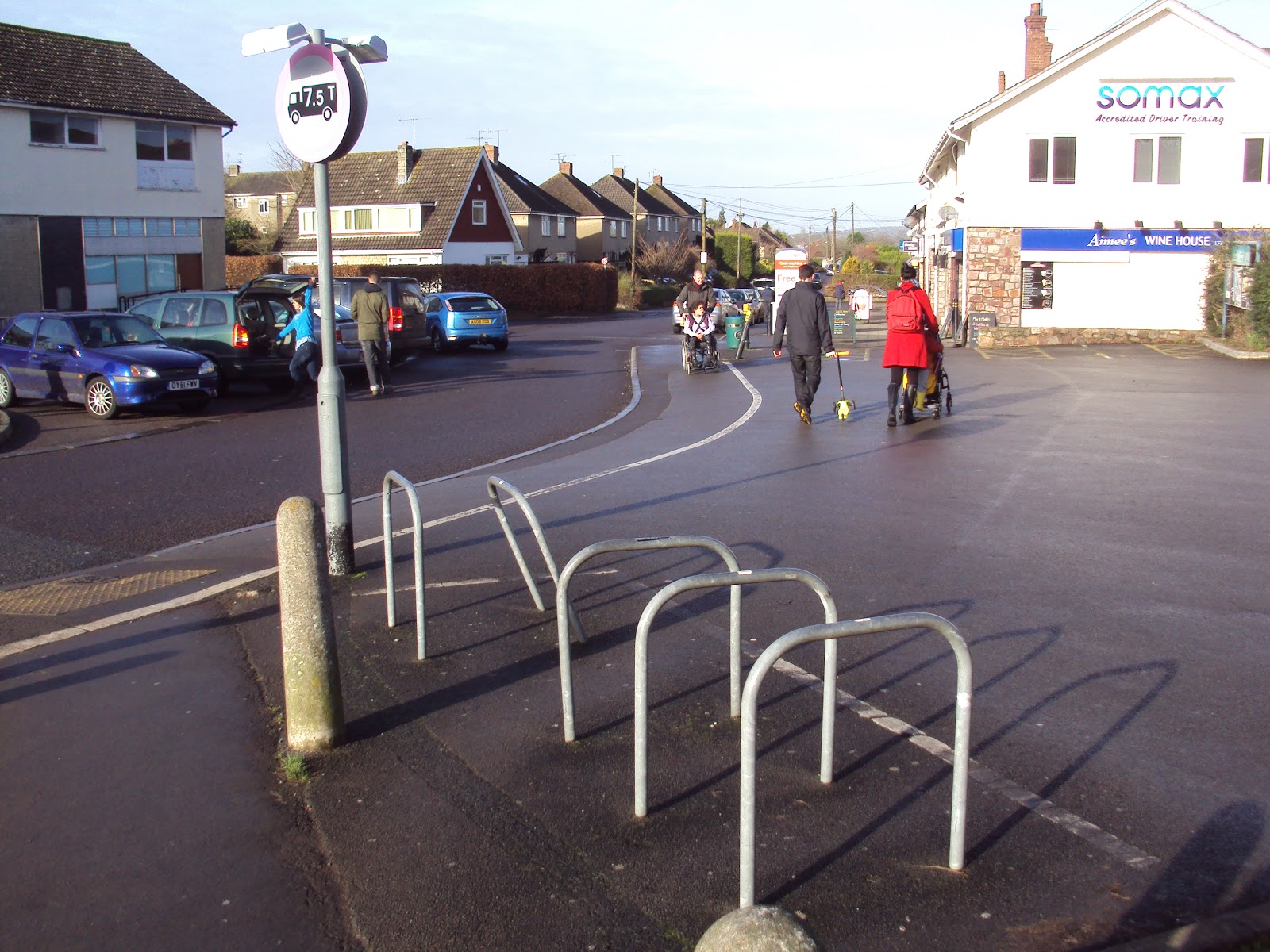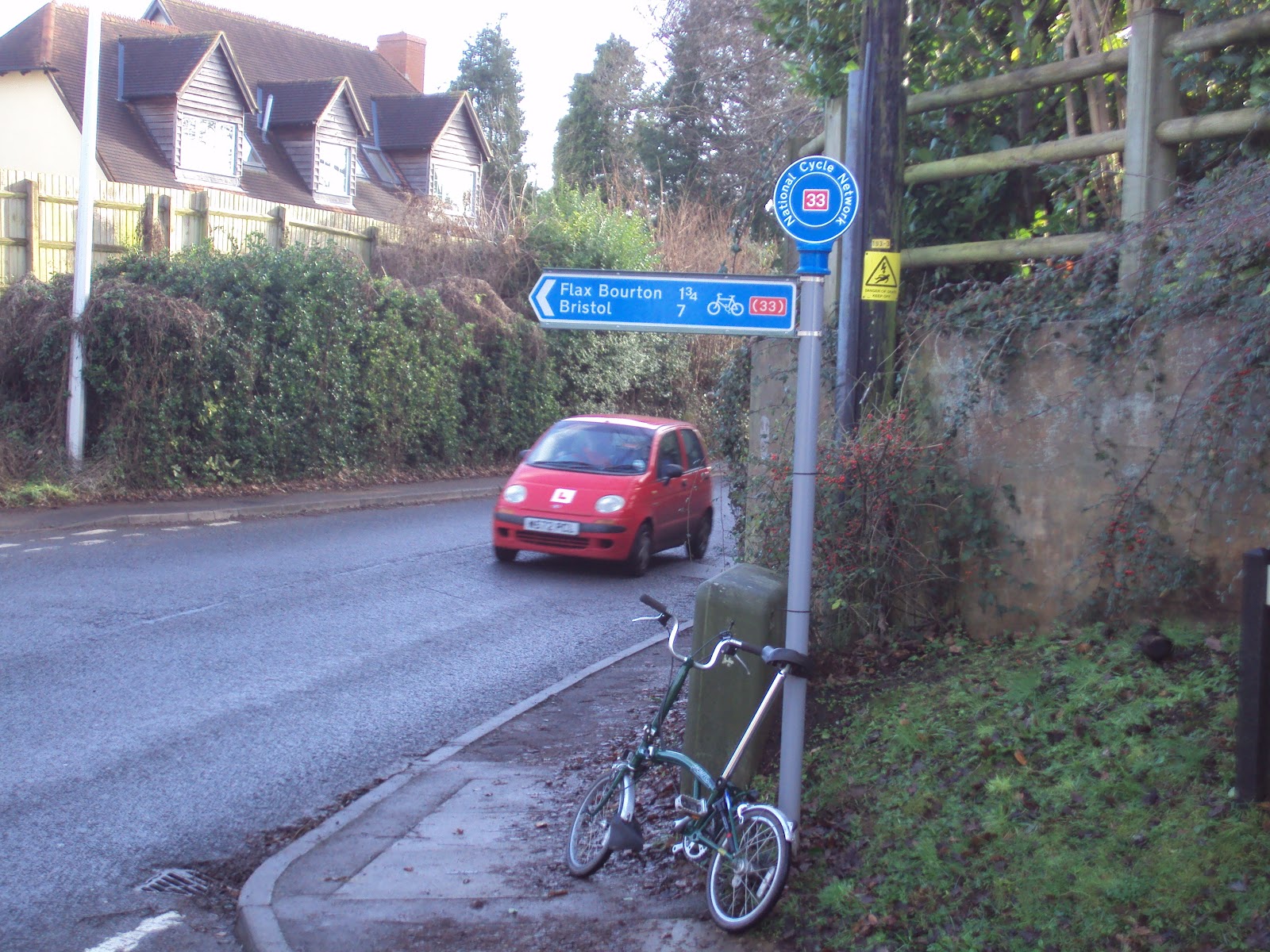At the end of April 2013 the West of England Partnership (made up of Bath & North East Somerset Council, Bristol City Council, North Somerset Council and South Gloucestershire Council) made a bid for £7.66m of funds from the Cycle City Ambition fund.
The £30m fund was set up under an initiative announced by transport minister Norman Baker in January 2013.
According to the Partnership’s TravelWest webpage which gives details of their bid: “The West of England authorities are committed to a vision of a safe and attractive on and off-road environment for cycling, building on the vibrant cycling culture that is developing throughout the area…”
It goes on
to say:
“Our aim is to have "more
people cycling, more safely, more often" and to provide safe and
accessible cycling for users aged from 8 to 80 years on all routes.
The West of England has seen
significant growth in cycling in recent years with the number of cycle journeys
increasing by 31 per cent between 2008 and 2012. For journeys to work we have
the highest mode share in the South West and amongst the Core Cities.
Cycle schemes recently
completed include the Bristol to Nailsea cycle path, the Two Tunnels project
along disused railway lines from Bath to Frome and the three routes between
Parkway Station, Lockleaze and Cribbs Causeway retail centres.
Our firm, systematic and enthusiastic support for cycling will ensure
that we build on this progress, and the Cycling City and Local Sustainable
Transport Fund projects, and that more people cycle, more safely and more
regularly.
The Cycle City Ambition Fund
will take us beyond our target to increase cycling by 78 per cent (2008-2016)
bringing benefits to health and wellbeing, reduction in carbon emissions and
sustainable mobility across the West of England”.
The accompanying statement of intent, signed by all four councils, adds that:
“This (aim) requires a
commitment to high quality routes with safe, convenient, efficient and
attractive infrastructure with links between the main urban areas that have the
potential to generate significant growth in levels of cycling. Traffic free
routes and prioritisation of cyclists and pedestrians at crossings, cycle
lanes, tracks alongside the carriageway and shared paths will provide a high
quality environment for cycling….
Sounds great doesn’t it. So how “firm, systematic and enthusiastic” is North Somerset’s support for
cycling?
Not very, it seems.
There are schemes for Bristol (1), South Gloucestershire (2)
and Bath (3).
But nothing for North
Somerset.
The completed application form confirms that “Although (North
Somerset Council are) not directly
involved in the bid they are a key West of England Partner as the scheme
links directly to projects in their area”. This presumably refers to the
City Promenade Scheme (Scheme 1) which connects with the Festival Way path to
Nailsea.
The total DfT funding sought by the 3 Councils taking part
breaks down into £4.86m for Scheme 1, £1.67m for Scheme 2, and £1.22m for
Scheme 3. This is to be supplemented by Local Authority funding of £3.11m, the bulk
of which comes from Bristol City Council, with South Gloucestershire
contributing just £12,000 from its own coffers and BANES £58,000. (Not much
evidence of commitment there, but at least they are taking part).
All told this amounts to a total investment of just over
£11m for the 3 schemes, 70% of which is
to be funded by the DfT grant if the bid is successful. For the South Gloucestershire and BANES schemes that figure rises to 99% and 95% respectively.
Free government money, in other words.
Not only that, but the total benefits projected for the 3 schemes amount to some £60m over the next 10 years, rising to an astonishing £455m over 30 years. On the more conservative measure of cost-benefit (which excludes things like NHS costs savings) the BCR (Benefit to Cost Ratio) for the 3 schemes is 12.56, where anything over 4 is considered "very high". In other words, for each £1 spent, the schemes will return an average of £12.56.
By way of comparison, the DfT's own assessment for HS2 is a BCR of 1.4.
Why, then, has North Somerset not put forward its own scheme as part of the bid? It cannot be for financial reasons, given that there is no requirement for match funding. And as North Somerset’s Executive member for Transport Elfan Ap Rees has said “I am always very keen that (North Somerset Council) identify and take up any external funding possibilities (for new cycle schemes).”
Nor can it be for lack of potential schemes – anyone
approaching Bristol on a bike from North Somerset will be all too well aware of
the need for improvements to cycling infrastructure, even after the opening of
the Festival Way. For example:Free government money, in other words.
Not only that, but the total benefits projected for the 3 schemes amount to some £60m over the next 10 years, rising to an astonishing £455m over 30 years. On the more conservative measure of cost-benefit (which excludes things like NHS costs savings) the BCR (Benefit to Cost Ratio) for the 3 schemes is 12.56, where anything over 4 is considered "very high". In other words, for each £1 spent, the schemes will return an average of £12.56.
By way of comparison, the DfT's own assessment for HS2 is a BCR of 1.4.
Why, then, has North Somerset not put forward its own scheme as part of the bid? It cannot be for financial reasons, given that there is no requirement for match funding. And as North Somerset’s Executive member for Transport Elfan Ap Rees has said “I am always very keen that (North Somerset Council) identify and take up any external funding possibilities (for new cycle schemes).”
A safe cycle route from the suspension bridge to the gateway
of Ashton Court:
There is, if recent evidence is to believed, little love lost between the leaders of NSC and Mayor George Ferguson, so could there be politiking at play here?
Back in March, Sustrans' Jon Usher commented on what he saw as the lack of ambition of all of the West of England partnership authorities apart from Bristol, saying:
"With the exception of the north fringe of South Gloucestershire, none of the other authorities has shown much cycling ambition. By ambition, I mean expressing real desire to initiate a step change for cycling".
Back in March, Sustrans' Jon Usher commented on what he saw as the lack of ambition of all of the West of England partnership authorities apart from Bristol, saying:
"With the exception of the north fringe of South Gloucestershire, none of the other authorities has shown much cycling ambition. By ambition, I mean expressing real desire to initiate a step change for cycling".
Whilst NSC are to be commended for their public support of
projects such as the Festival Way route, and the Clevedon to Weston cycle route,
there are other recent examples of less helpful interventions which
suggest that the Council's leaders have, shall we say, a less than wholehearted commitment to improving cycling infrastructure in North Somerset.
Statements like "We have many more pressing priorities (than cycling routes) for our stretched highways budget" (on the Council website) are also revealing as to the Council's real priority which is, of course, to focus on driver-friendly initiatives.
Meanwhile recent surveys have shown that whilst North Somerset does OK in terms of leisure cycling (coming second out of the 4 West of England authorities in terms of the proportion of residents who cycled for any length or purpose at least once a week or once per month, behind Bristol), it does much less well for commuter cycling (in third place by percentage of commuters who usually cycle to work) and is - shamefully - the only one of the 4 authorities in which the percentage of commuter cyclists has actually fallen between 2001 and 2011.
So what of the future?
Speaking at the opening of the Festival Way in April 2013, Mr Ap Rees said:
Statements like "We have many more pressing priorities (than cycling routes) for our stretched highways budget" (on the Council website) are also revealing as to the Council's real priority which is, of course, to focus on driver-friendly initiatives.
Meanwhile recent surveys have shown that whilst North Somerset does OK in terms of leisure cycling (coming second out of the 4 West of England authorities in terms of the proportion of residents who cycled for any length or purpose at least once a week or once per month, behind Bristol), it does much less well for commuter cycling (in third place by percentage of commuters who usually cycle to work) and is - shamefully - the only one of the 4 authorities in which the percentage of commuter cyclists has actually fallen between 2001 and 2011.
So what of the future?
Speaking at the opening of the Festival Way in April 2013, Mr Ap Rees said:
“We want to develop
similar off-road (cycle) routes in other parts of the district…”
The next few years will reveal whether this statement, along
with the commitments made in the statement of intent, will lead to real and
substantial investment in safe cycling routes in North Somerset – or whether
they are so much hot air. On recent
evidence, the omens are not good.























